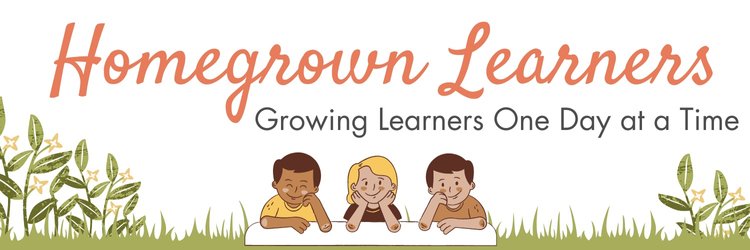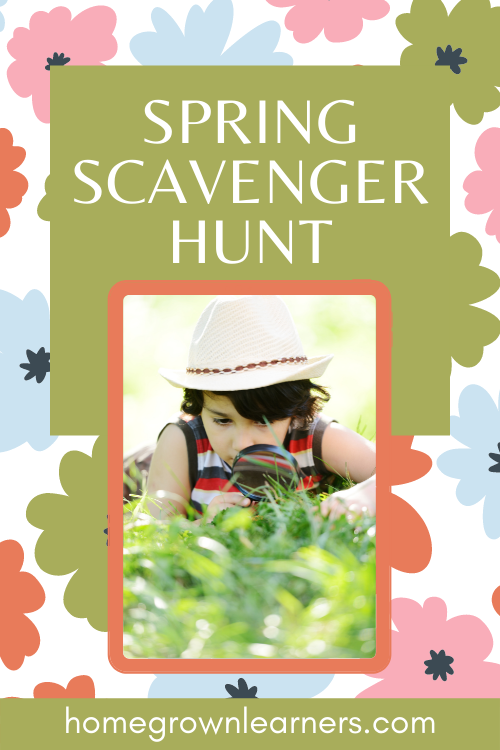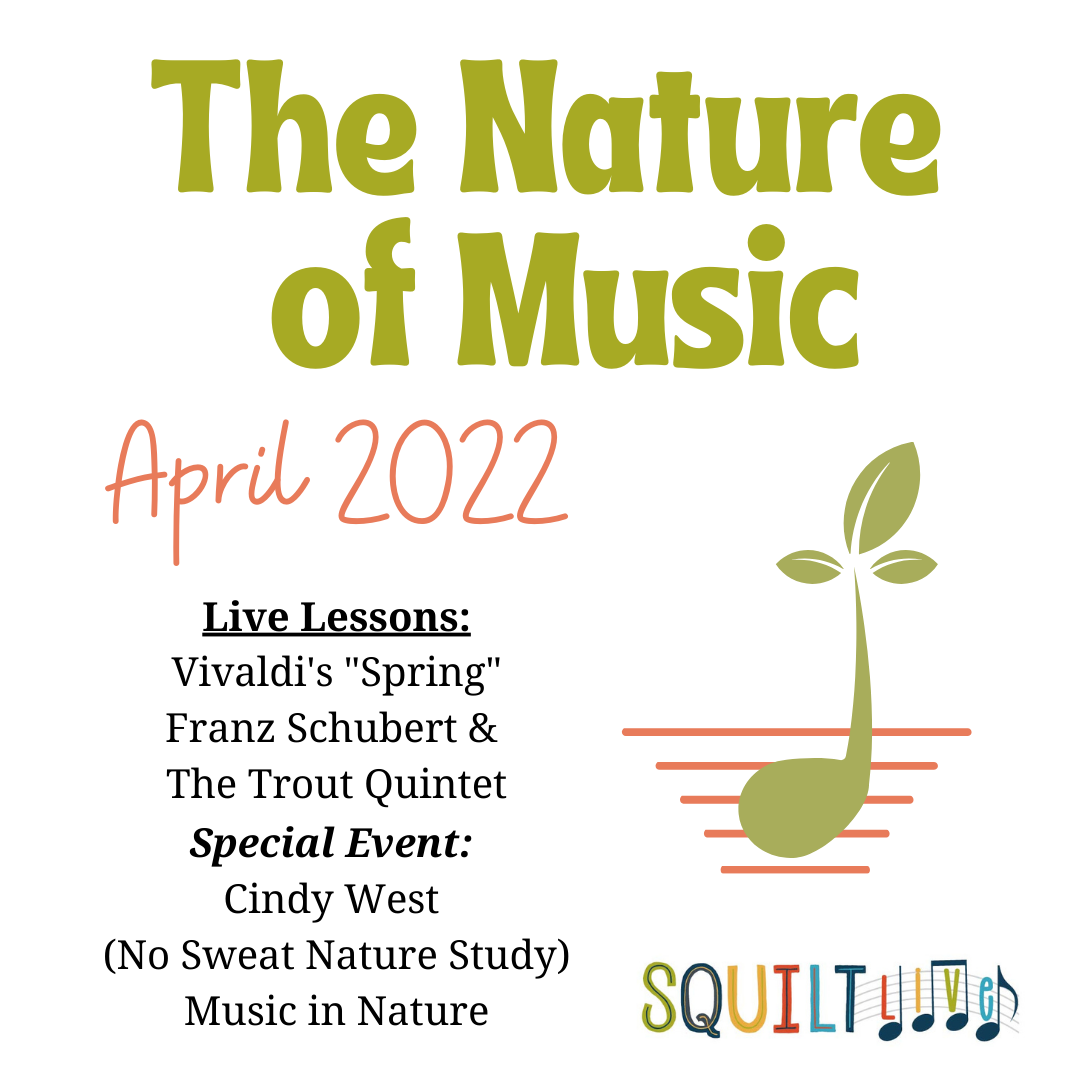"That is one good thing about this world ... There are always sure to be more springs."
- L.M. Montgomery
Spring holds a special place in my heart. I truly enjoy all four seasons in moderation (I live in the south, so winters are not extreme though summer is a different story). However, there is something special about spring.
I love feeling the warm sun on my face, watching the flowers grow, and enjoying the extra birds in our yard. Full disclosure, as a mom, I also appreciate the little bit of quiet that comes from my boys spending so much time playing outside in the spring after the cold days of winter.
The new plant and animal life gives me hope and joy. As Laura Ingalls Wilder once said, “Some old-fashioned things like fresh air and sunshine are hard to beat.”
Benefits of a Spring Scavenger Hunt
A spring scavenger hunt is a perfect way to get everyone outside in the warm fresh air. It is a fun activity that can be enjoyed by the whole family or a group of friends. In this post I will give you ideas for how to use this scavenger hunt with MULTIPLE AGES.
In addition to being fun and getting children (and adults) outside, there is a lot of learning with a spring scavenger hunt. It can be a great way to spark interest in nature study (and music, literature, and more!), a chance to expand on learning about different nature topics, and an opportunity to encourage physical activity.
Spring Scavenger Hunt Directions
You can pick a time that works well for your family or save it for a day when things are not going well, and you need a homeschool reset. (You could even call an official “day off” and head out on a field trip to a local spot with a picnic lunch, read alouds, and the scavenger hunt printable.
Simply print out the scavenger hunt printable, grab a pencil to mark off what you find, and get going.
This scavenger hunt will use more than just sight - we will be encouraging our children to LISTEN for signs of spring, too.
You can choose to do the scavenger hunt in your backyard or take a ride to a local park or hiking trail. It might even be fun to try it in a couple of different locations and discuss the differences in what you can find.
Spring Scavenger Hunt Modifications and Variations
"If we had no winter, the spring would not be so pleasant."
- Anne Bradstreet
Depending on your location, the ages and interests of your students, and how much time you want to spend on your scavenger hunt, you may want to make some simple modifications.
For example, if you have young children, you may want to keep it very simple and look for a bird, a leaf, a flower. You may have older children look for more specific items, such as a cardinal or a blue jay.
You can also incorporate more nature study into your scavenger hunt by having them identify the specific types of plants and animals. Students can use field guides and other resources to identify the birds, trees, flowers, etc.
For preschoolers, you could work together and do a color hunt. Spring is full of new colors from flowers, birds, and more.
If you want students to complete the project independently or make it a little more exciting for them, you can turn it into a photo scavenger hunt. Give each child or team a camera and have them take a photograph of the items on their list.
You could do the scavenger hunt together as a family or turn it into a friendly family competition to see who can find the most items on their list in a given time.
In this free scavenger hunt download you can print two different versions - one with words for your readers and one without words for your pre-readers!
Additional Resources and Extensions
One of the great benefits of a spring scavenger hunt is that it requires nothing more than a pencil and a piece of paper. However, if you enjoy the scavenger hunt and want to extend your learning, a few resources could be helpful.
Reading picture books about spring and gardening is a great way to engage young children before or after your hunt. Some of our favorites are the Tales of Beatrix Potter, Planting a Rainbow by Lois Ehlert, and When Spring Comes by Kevin Henkes.
Favorite Books for Spring also has many book suggestions.
Field guides can help you learn more about what you found on your scavenger hunt. There are many excellent guides, but we like the Peterson First Guides. They are small and easy to carry, and they are also simple enough for elementary students to use.
SQUILT LIVE! Music Appreciation is offering an entire month of nature and music studies in April 2022 (available afterward in their archives, too!). Lessons include Vivaldi’s Spring, Schubert’s Trout Quintet, and an entire month of listening selections having to do with “The Nature of Music”. There will even be a nature study lesson from Miss Cindy at No Sweat Nature Study!
Finally, if your children are interested in the insects they find on their scavenger hunt, I recommend Pets in a Jar .
We have used this book for years in our home, and it is a favorite for helping my children safely keep the insects they find. It explains what each insect needs for shelter, food, and water. We provide the insect with a safe home for a few days while the children get to observe it up close. Then when they are done, we can release the insects back into the wild.
Beatrix Potter: The Complete TalesPlanting a RainbowWhen Spring ComesPets in a Jar: Collecting and Caring for Small Wild Animals (Puffin Science Books)Peterson Field Guide To Birds Of North America, Second Edition (Peterson Field Guides)Birds (Peterson Field Guide Color-In Book)Peterson First Guide to Butterflies and MothsVivaldi's Four SeasonsThornton Burgess 26-Book Set
I hope you enjoy this spring scavenger hunt as much as our family.
What other signs of spring do you see in your neighborhood?
This post is from contributing writer, Dawn Peluso.
Dawn is a passionate follower of Jesus, wife to Chris, and homeschool mom of four. In her spare time she loves to read, hike, and write on her blog Schoolin’ Swag. She enjoys reviewing curriculum and helping moms find the right fit for their families. Some of her favorite parts of homeschooling are hymn studies, living history, and read alouds. She and her children also enjoy incorporating food into their studies as often as possible.















